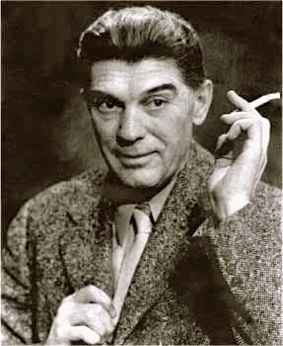Vaclav Vytlacil (1892 - 1984) Works

Vaclav Vytlacil (1892 – 1984)
Born in New York City to Czechoslovakian parents in 1892, Vaclav Vytlacil grew up primarily in Chicago. He attended classes at the School of the Art Institute of Chicago before returning to New York at the age of 20. From 1913 to 1916, he enjoyed a scholarship from the Art Students League, where he studied under John C. Johansen, a portrait artist whose expressive style resembled that of John Singer Sargent, and Anders Zorn.
In 1916, Vytlacil accepted a teaching position at the Minneapolis School of Art and remained there until 1921. This position enabled him to spend time in Europe to study Cézanne’s paintings and the works of the Old Masters, traveling to Paris, Prague, Dresden, Berlin, and Munich. He studied at the Royal Academy of Art in Munich before settling there in 1921. Fellow students at the Academy included Ernest Thum and Worth Ryder, who introduced Vytlacil to famous abstractionist, Hans Hofmann. Vytlacil worked with Hofmann from 1922 to 1926 as a student and teaching assistant.
After returning to the United States, Vytlacil began lecturing at the University of California, Berkeley, on Modern European art in the summer of 1928. Soon thereafter, he became a member of the Art Students League faculty, and a year later, he returned to Europe to persuade Hofmann to teach at the League as well. Vytlacil spent about six years in Europe studying the works of Matisse, Picasso, and Dufy but returned once again to New York in 1935. He co-founded the American Abstract Artists group in 1936. He later held teaching positions at Queens College in New York, the College of Arts and Crafts in Oakland, California; Black Mountain College in North Carolina; and the Art Students League.
Vytlacil’s paintings exhibit a definite inclination toward modernism. His still lifes and interiors from the 1920s indicate the influence of Cézanne. In the 1930s, Vytlacil’s works displayed two very different art forms simultaneously; his cityscapes and landscapes combine Cubist-inspired spatial concerns and an expressionistic approach to line and color. He also used old wood, metal, cork, and string in his constructions, influenced by friend and former student, Rupert Turnbull. However, Vytlacil eventually ceased creating these constructions, as he considered them too limiting. Painting, and its spatial challenges, remained his preferred medium. During the 1940s and 1950s, his works indicated a sense of spontaneity not felt in his earlier work.
Vytlacil married Elizabeth Foster in Florence, Italy, in 1927. They continued to live and work in Positano, Italy, for extended periods. Later on, they divided their time between homes in Sparkill, New York, and Chilmark, Massachusetts, where “Vyt,” as he was affectionately called, taught at Martha’s Vineyard Art Association beginning in 1941. He was associated with the Old Sculpin Group and often exhibited his works at their galleries on the island.
Vytlacil was honored with solo shows at the Carnegie Institute, Montclair Art Museum, Phillips Memorial Gallery, Krasner Gallery, University of Notre Dame, Rochester Art Gallery, and others.
Vaclav Vytlacil died in 1984 in New York at age 92.
Collections
- Boca Raton Museum of Art, FL
- Chicago Municipal Collection, IL
- Colorado Springs Fine Arts Center, CO
- Dessau Museum, Germany
- Metropolitan Museum of Art, NY
- Milwaukee Art Institute, WI
- Neuberger Museum of Art, NY
- New Jersey State Museum, NJ
- Pennsylvania Academy of Fine Art, PA
- Phillips Collection, Washington, D.C.
- Rochester Museum of Art, NY
- Sheldon Memorial Art Gallery, Lincoln, NE
- Smithsonian American Art Museum, Washington, D.C.
- University of Notre Dame Art Gallery in South Bend, IN
- University of Wyoming Art Museum, Laramie, WY
- Whitney Museum of American Art, NY
Awards
- 1913 Prize, Art Institute of Chicago
- 1936 Gold Prize, Art Institute of Chicago
- 1936 Gold Prize, France
- 1914 Honorable Mention, Society of American Artists
Exhibitions
- 1913, 1914-1920, 1936, 1937-41 Art Institute of Chicago
- 1915, 1945-64 Pennsylvania Academy of Fine Arts Annual, Philadelphia
- 1916-49 Corcoran Gallery Biennials, Washington, D.C.
- 1917 Society of Independent Artists
- 1936 France
- 1914 Society of American Artists
- 1938-62 Whitney Museum of American Art, New York
- 1942, 1944, 1945 Carnegie Institute, Pittsburgh
- 1944 “Artists for Victory,” Metropolitan Museum of Art, New York
- 1955 Phillips Memorial Gallery, Washington, D.C.
- 1951 Feigle Gallery in New York, NY
- 1975 Montclair Art Museum in New Jersey, retrospective
- 1980-81 Diamond Museum of Fine Art, NYC (solo exhibition)
Sources include:
Askart from several issues of the Vineyard Gazette, Martha's Vineyard, Massachusetts

